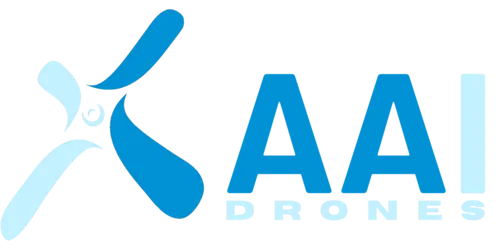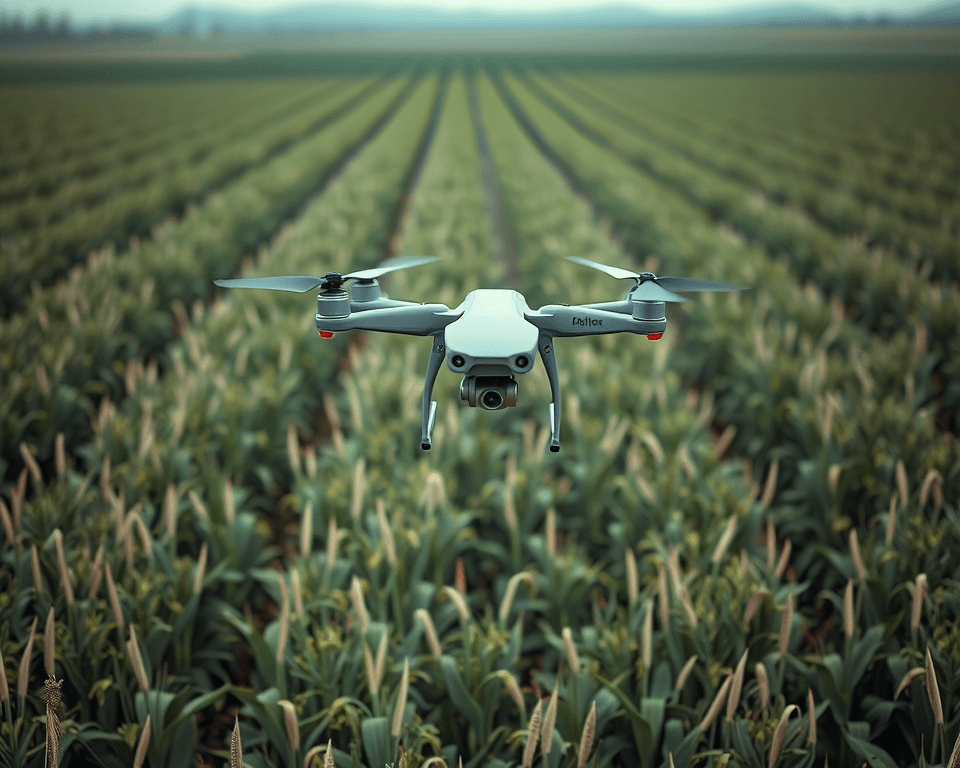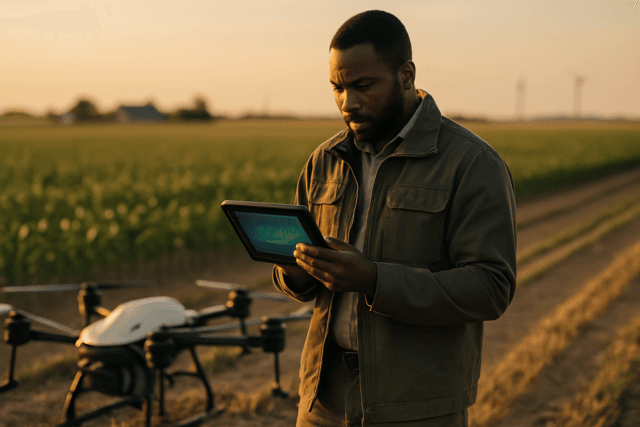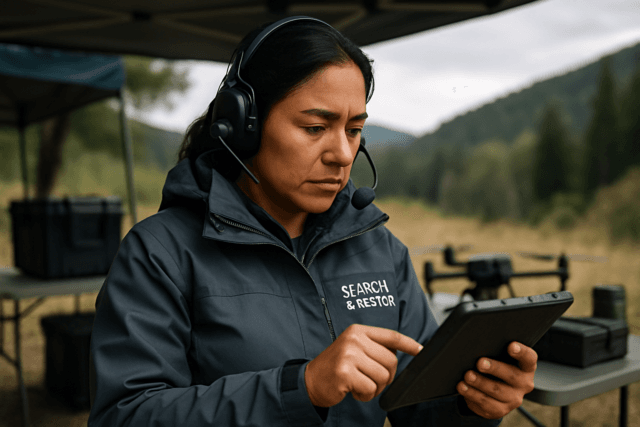Drones are revolutionizing agriculture, offering farmers unprecedented capabilities to monitor crops, optimize resources, and improve yields. This article explores the diverse applications of drones in modern farming, highlighting their benefits, challenges, and the exciting future they are paving for the agricultural sector.
Why Drones are Taking Over the Farm
For generations, farmers have relied on traditional methods and ground-level observations to manage their fields. Now, drones equipped with advanced sensors are providing detailed aerial views and data about every acre of land, marking a significant shift in farm management. The agricultural drone market is experiencing rapid growth, with projections estimating an increase from $1.2 billion in 2019 to $4.8 billion in 2024. This surge is fueled by the increasing adoption of precision farming techniques and the numerous benefits drones offer.
Soaring into Precision Agriculture
Precision agriculture embodies a strategic approach to farming that focuses on meticulous observation, measurement, and adaptation to variations in crop conditions. Drones play a pivotal role in this approach by providing real-time, actionable insights that enable the precise application of water, fertilizers, and pesticides. This targeted approach optimizes crop health and yield while minimizing environmental impact.
How Drones Contribute to Precision Farming:
- Real-time Crop Monitoring: Drones can quickly and efficiently monitor vast areas of cropland, identifying areas that require attention, such as pest infestations or nutrient deficiencies.
- Precise Data Collection: Equipped with advanced sensors and cameras, drones capture detailed images and data related to crop health, soil conditions, and moisture levels.
- Automated Task Management: Drones can automate tasks such as spraying pesticides and insecticides, covering a 1-hectare portion of farmland in just 10 minutes.
- Efficient Resource Use: By providing precise data on crop needs, drones enable farmers to apply resources like water, fertilizers, and pesticides only where needed, reducing waste and environmental impact.
- Enhanced Decision Making: Farmers can compile data from drones to gain a clearer picture of crop growth, health, and soil moisture, enabling them to make more informed decisions.
What Can Drones Do on the Farm?
Drones perform a wide array of tasks that enhance efficiency, reduce costs, and promote sustainable farming practices.
Core Applications:
- Crop Monitoring and Health Assessment: Drones equipped with multispectral or thermal imagery can assess plant health by measuring the crop’s reflectance to specific wavelengths of light. This allows for the early detection of issues like nutrient deficiencies, water stress, pest infestations, and diseases.
- Land Imaging: Drones provide detailed aerial views of farmland, helping farmers to monitor crop and livestock conditions and optimize field management.
- Topography and Boundary Surveying: Drones can survey topography and boundaries, providing accurate field mapping, including elevation information that helps growers identify irregularities in the field.
- Soil Monitoring: Drones can monitor soil conditions, providing accurate field mapping, including elevation information that allows growers to find any irregularities in the field. Some drones can also monitor nitrogen levels in the soil, enabling precise fertilizer application.
- Planting and Seeding: Drones can be used for automated seeding, particularly in the forestry industry. They can efficiently plant seeds in hard-to-reach areas, replanting them without endangering workers.
- Irrigation Monitoring: Drones can provide detailed maps of soil moisture levels, helping farmers optimize their irrigation schedules and ensuring that crops receive the right amount of moisture.
- Spraying: Drones can apply spot treatments of pesticides and fertilizers, reducing the amount of chemicals required and minimizing environmental impact.
- Livestock Management: Drones can monitor livestock movement and health, helping farmers prevent disease outbreaks and ensure the overall welfare of their animals.
- Security: Drones can monitor the far reaches of a farm, providing an overview of operations and helping to locate equipment. They can also be deployed to monitor fencing and perimeters of valuable crops.
- Collecting Soil and Water Samples: Drones can collect soil and water samples, helping farmers identify potentially dangerous chemicals or bacteria.
The Benefits of Using Drones in Agribusiness
The use of drones in agriculture offers a multitude of benefits that contribute to increased efficiency, reduced costs, and more sustainable farming practices.
Key Advantages:
- Improved Efficiency and Productivity: Drones can cover vast areas of cropland in a short time, allowing farmers to quickly identify areas that call for attention.
- Cost Savings: By providing accurate data and enabling precise application of resources, drones can help farmers reduce input costs, such as fertilizers, pesticides, and water.
- Environmental Benefits: Drones can reduce the overuse of water, fertilizers, and pesticides, minimizing their harmful effects on the environment.
- Enhanced Crop Management: Drones provide real-time insights into crop health and growth patterns, allowing farmers to make informed decisions about irrigation, fertilization, and pest control.
- Better Data Accuracy: Drones provide more accurate data compared to traditional manual methods, helping farmers make better-informed decisions.
- Reduced Labor Costs: Drones automate many time-consuming tasks, reducing the need for manual labor and associated costs.
- Early Problem Detection: Drones can quickly detect potential issues such as pest infestations, diseases, and nutrient deficiencies, allowing for timely interventions.
- Optimized Resource Allocation: Drones enable farmers to apply water, fertilizers, and pesticides more selectively, leading to reduced costs and improved yields.
- Increased Yields: Precision agriculture technologies, including drones, can increase crop yields by up to 20%.
- Reduced Environmental Impact: Drones help reduce agricultural runoff and chemical drift, benefiting nearby crops and the soil.
Top Drone Models for Agriculture
Several drone models are making a significant impact in modern farming, each offering unique features and capabilities.
- DJI Agras T40: This professional drone brings precision and power to agricultural spraying with a 40-liter tank capacity and smart operational controls. It can spray up to 240 acres per day, making it ideal for broadacre crop spraying and orchard treatment.
- XAG P40 Agricultural Drone: This drone stands out with its solid construction and smart features built for professional farming. It can switch between spraying and spreading modes, carrying an impressive 40kg payload in a single flight.
- Parrot Bluegrass Fields: This specialized agricultural drone is designed for precision farming, field mapping, and crop analysis. It features a dual-camera system with a multispectral sensor paired with a standard RGB camera.
- DJI Phantom 4 RTK: This drone excels at precision mapping and surveying in agriculture. Its Real-Time Kinematic (RTK) positioning system achieves centimeter-level accuracy in both horizontal and vertical positioning.
- Yamaha FAZER R G2: Known for its reliability and performance, this drone is suitable for various agricultural applications, including spraying and crop monitoring.
- HSE AG-V6A Plus: This drone offers a balance of performance and affordability, making it a good option for farmers looking to adopt drone technology without a significant investment.
- 3DR H520E: This drone is designed for industrial use and offers a range of capabilities suitable for agricultural applications, including mapping and surveying.
- DJI Mavic 3 Multispectral: With advanced multispectral sensors, this drone can assess plant health across vast fields by capturing light absorption and reflectance data in different spectra.
The Role of AI in Agricultural Drone Technologies
Artificial intelligence (AI) is playing an increasingly significant role in enhancing the capabilities of agricultural drones. AI algorithms analyze images collected by drones to provide fast and accurate results on plant health, pest detection, and soil conditions.
Benefits of AI in Agricultural Drones:
- Early Disease Detection: AI algorithms can detect signs of disease early, allowing for timely interventions.
- Optimized Crop Yields: AI-powered drone systems optimize crop yields by reducing resource usage, helping farmers practice more sustainable agriculture.
- Real-time Data Analysis: Drones can analyze real-time data while flying over fields, providing instant recommendations to farmers.
- Autonomous Operations: AI enhances drone autonomy, enabling sophisticated operations such as real-time data processing and advanced imaging analysis.
Navigating Regulations
The use of drones in agriculture is subject to regulations that vary by region and country. In the European Union, drone regulations are harmonized across member states, ensuring safe and standardized operations. Key aspects of the EU drone regulations include:
- Drone Registration: Drone operators must register with the national aviation authority in their country of residence.
- Pilot Competency: Remote pilots must undergo training, pass a test, and receive a remote-pilot certificate.
- Operational Categories: Drone operations are categorized into “open,” “specific,” and “certified” categories, each with its own set of requirements.
- Geographical Zones: Member states must make available information on geographical zones for geo-awareness in a digital format.
In the United States, the Federal Aviation Administration (FAA) regulates the use of drones in agriculture. Key regulations include:
- Part 107 Certification: Commercial drone operators must obtain a Remote Pilot Certificate under Part 107 of the FAA regulations.
- Operational Restrictions: Drones must be operated within visual line of sight, and flights are restricted near airports and other sensitive areas.
- Agricultural Aircraft Operator Certificate: Operators conducting agricultural operations, such as spraying, may need to obtain an Agricultural Aircraft Operator Certificate.
Challenges and Considerations
While drones offer numerous benefits, there are also challenges and considerations to keep in mind.
Common Challenges:
- Regulatory Restrictions: Compliance with drone regulations can be complex and may impose financial burdens on businesses.
- Data Management: The large amount of data collected by drones requires efficient systems for storage, processing, and analysis.
- Technical Expertise: Operating and maintaining drones requires technical expertise, which may necessitate training or hiring specialized personnel.
- Weather Dependency: Drone operations can be affected by weather conditions such as wind, rain, and fog.
- Battery Life: Limited battery life can restrict the flight time and range of drones, requiring frequent recharging.
The Future of Drones in Agriculture
The future of drones in agriculture looks promising, with ongoing advancements in technology and increasing adoption rates.
Key Trends:
- AI and Machine Learning Integration: Further integration of AI and machine learning will enhance the ability of drones to analyze data, make predictions, and autonomously adjust farming strategies.
- Improved Battery Life and Flight Efficiency: Advancements in battery technology will extend drones’ endurance, allowing for longer flight times and greater range.
- Enhanced Connectivity and IoT Integration: Incorporating the Internet of Things (IoT) into drone systems will enable them to collect and transmit real-time information on soil conditions, crop health, and weather patterns.
- Drone Swarms: The emergence of drone swarms for integrated farm management will enable more complex analyses and interventions.
- Environmental DNA Sampling Drones: The development of environmental DNA sampling drones will allow for more comprehensive monitoring of soil and crop health.
A Sustainable and Efficient Future
Drones are transforming agriculture by providing farmers with the tools to make more informed decisions, optimize resource use, and improve crop yields. By embracing this technology, farmers can not only improve their own operations but also contribute to addressing global challenges such as food security and environmental conservation. As we look to the future of agriculture, it’s clear that drones will play a crucial role in shaping a more productive, sustainable, and technologically advanced farming landscape.





